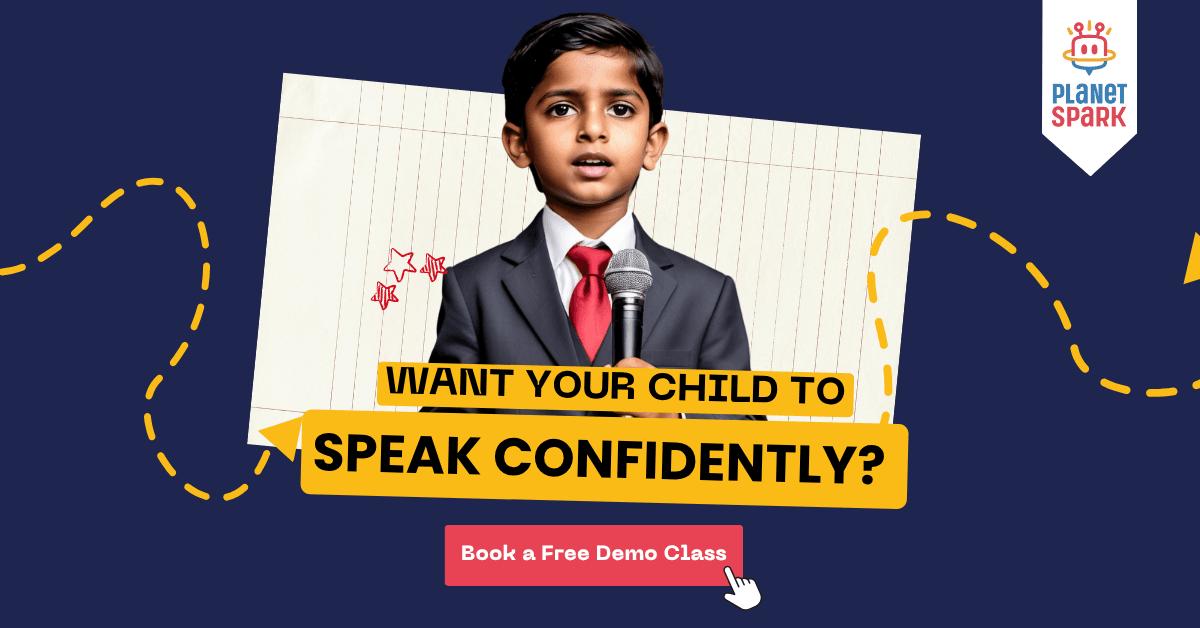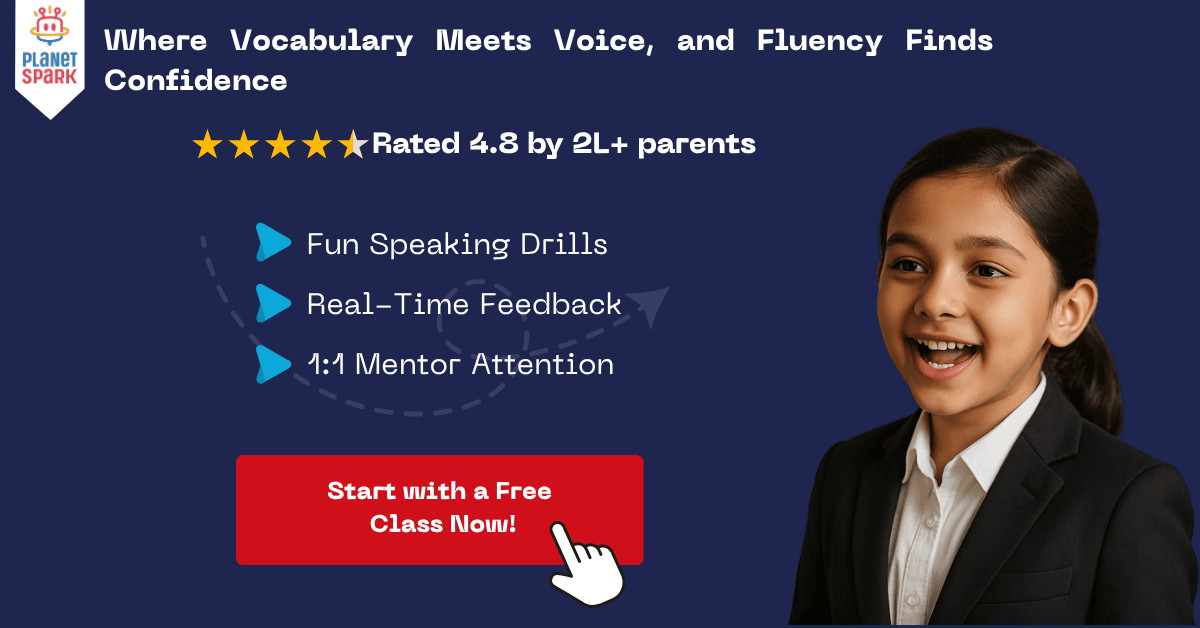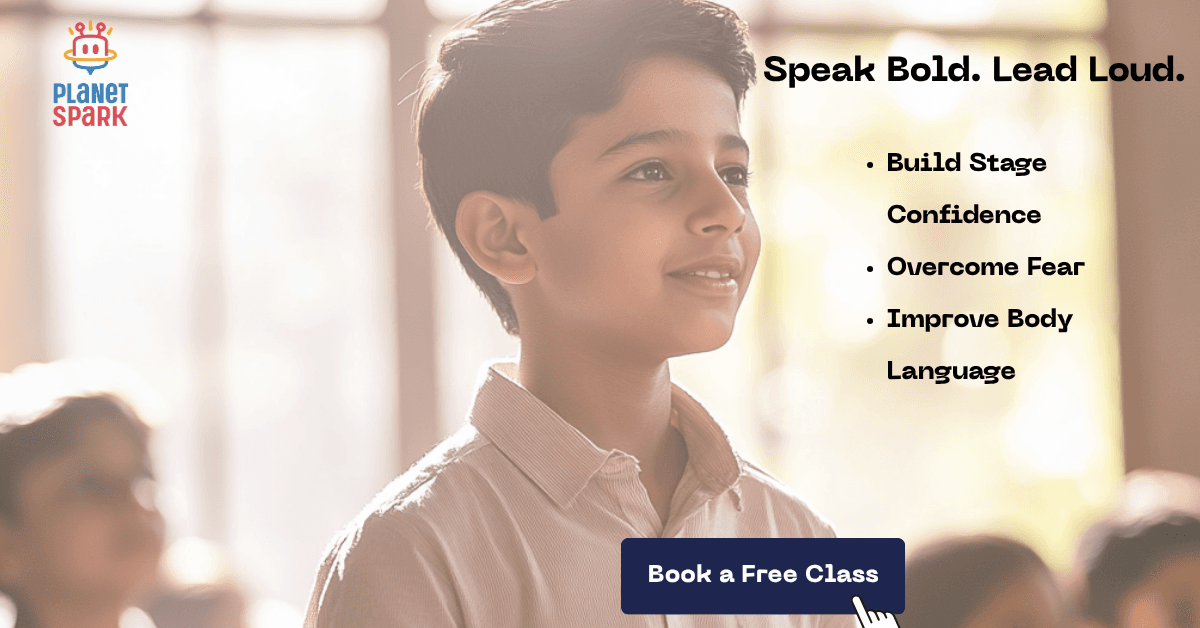How to End a Speech with Impactful Closing Tips

Table of Contents
- Why the End of a Speech Matters
- Types of Speech Endings
- Common Mistakes to Avoid in Speech Closings
- Moving Beyond the Basics
- Strategy 1: Align Your Ending with Your Core Message
- Strategy 2: Match the Ending to Your Audience’s Expectations
- Strategy 3: The “Echo Effect”
- Strategy 4: Use Silence as a Tool
- Strategy 5: The Emotional Build-Up
- Real-Life Examples of Impactful Speech Closings
- Practicing Speech Closings Effectively
- Mistakes to Avoid in Advanced Speech Closings
- Building Emotional Resonance in Closings
- Why Choose PlanetSpark for Public Speaking?
Every great speech has three acts: a beginning, a middle, and an end. While most people spend hours perfecting their introductions and crafting strong content, they often underestimate the power of the conclusion. Yet, the way you end your speech is the very moment your audience will remember most. It’s the final impression you leave, the words that echo in their minds, and the key takeaway that decides whether your talk was inspiring, forgettable, or transformational.
In this blog, we will break down everything you need to know about closing your speech with confidence and power. From storytelling closings to call-to-action endings, from humorous finishes to thought-provoking quotes, you will discover practical tools you can apply in school presentations, boardroom talks, public speaking competitions, and even everyday conversations.
The psychology of a strong closing and why audiences remember endings most.
Different types of impactful speech closings, including storytelling, rhetorical questions, quotes, summaries, and calls-to-action.
Practical examples of how to end a speech in school, the workplace, or public competitions.
Step-by-step methods to practice speech conclusions so you can master them with ease.
Common mistakes to avoid when ending your speech.
Advanced tips for building emotional resonance in your closing.
By the time you finish this blog, you won’t just know how to end a speech you’ll know how to end it like a pro, leaving your audience inspired, persuaded, or deeply moved.

Why the End of a Speech Matters
If the beginning of your speech captures attention, the ending is what cements your message in the audience’s memory. Studies in communication show the primacy-recency effect: people remember the first and last things they hear the most. Your opening and closing are the golden bookends of your speech.
An impactful closing does three things:
Reinforces your main idea.
Provides emotional or intellectual closure.
Leaves the audience with something to act upon or reflect on.
Without a strong ending, even the most powerful speech can feel incomplete. Imagine a movie that builds suspense for two hours but ends abruptly—it would leave the audience unsatisfied. Similarly, your speech deserves a crafted, purposeful conclusion.
PlanetSpark’s Public Speaking Program trains children in body language, storytelling, and stage confidence. Seats are filling up fast
Types of Speech Endings
There’s no one-size-fits-all way to end a speech. The best closing depends on your audience, topic, and purpose. Let’s explore the most effective techniques:
1. The Storytelling Close
Human brains are wired to love stories. Ending with a short, powerful anecdote helps tie your message to real human experiences. A story lingers longer than facts because it engages both the mind and the heart.
Example: If your speech is about leadership, you could end with the story of a young athlete who persevered through challenges to win a championship.
2. The Call-to-Action Close
This type of ending inspires action. Instead of letting your message fade, you push the audience to do something, whether it’s changing a habit, reflecting deeply, or joining a cause.
Example: “Don’t just listen to these ideas, take them into your life, share them, and make a difference starting today.”
Our Public Speaking League trains young learners to influence and inspire just like TED speakers.
3. The Quotation Close
Quoting a powerful thinker, leader, or author at the end of your speech can give weight to your message. But make sure it’s relevant and fresh, not overused clichés.
Example: If your speech is about change, you might close with: “Be the change you wish to see in the world.” – Mahatma Gandhi
4. The Question Close
Asking a rhetorical question engages the audience’s mind and makes them reflect even after the speech ends. It’s a way to extend your influence beyond the stage.
Example: “If not now, then when? If not us, then who?”
5. The Summary Close
Sometimes, clarity is king. A summary of your three main points ensures that your audience leaves with the key takeaways crystal clear in their minds.
Example: “So remember: believe in yourself, work hard, and never stop learning. These are the three keys to success.”
6. The Visionary Close
Paint a picture of the future. Help your audience imagine what life could be like if they embrace your message. This leaves them not just informed, but inspired.
Example: “Imagine a world where every child speaks with confidence, every voice is heard, and every idea has the power to change the future.”
PlanetSpark’s courses are designed to turn everyday learners into visionary speakers.
7. The Humor Close
Ending with a light-hearted joke or witty remark can leave the audience smiling. But humor must fit the tone; don’t force it if the subject is serious.
Example: “And if you remember nothing else from my speech, at least remember that I managed to finish it on time!”
8. The Emotional Close
Sometimes, the best way to end is to touch the audience’s heart. Whether it’s a story of resilience, gratitude, or hope, emotion creates connection.
Example: “I stand here not just as a speaker, but as someone who believes in each of you. Together, we can create a better tomorrow.”
Common Mistakes to Avoid in Speech Closings
Even with the best preparation, many speakers falter at the end. Here are mistakes to avoid:
Ending abruptly with phrases like “That’s it.”
Rambling too long and losing impact.
Failing to signal the end (audiences like closure).
Overusing clichés that sound unoriginal.
Lacking energy, your conclusion should be your peak, not a drop.
Remember: a weak ending can undermine even the best speech. Always rehearse your conclusion as carefully as your introduction.

Moving Beyond the Basics
By now, you already know the fundamental techniques of storytelling, call-to-action, quotations, rhetorical questions, summaries, visionary closes, humor, and emotional endings. But real mastery of public speaking lies in going beyond the basics. It’s about learning when to use each technique, how to adapt it to your audience, and what small adjustments can make your ending unforgettable.
The following advanced strategies focus on deepening your understanding and execution. They will help you refine your skills so that whether you are addressing classmates, colleagues, or a large public audience, your ending is remembered for the right reasons.
Strategy 1: Align Your Ending with Your Core Message
The biggest mistake novice speakers make is treating their conclusion as a separate element. In reality, your closing should be the natural extension of your main idea.
Think of your speech as a circle: the conclusion must connect back to the introduction. If you began with a story, end by finishing that story. If you opened with a bold statement, close by reinforcing it. This technique is called “circular closure.”
Example:
Opening: “Imagine a world where children fear speaking up in class.”
Closing: “That world is changing. And with your help, we can ensure every child finds their voice.”
This creates a sense of completion while amplifying your message.
At PlanetSpark, we train kids to design their talks with strong openings and powerful closings.
Strategy 2: Match the Ending to Your Audience’s Expectations
Different audiences respond to different types of closings. For example:
Academic audiences prefer summary and takeaway-based endings.
Corporate audiences appreciate clear calls to action.
School competitions often reward storytelling or emotional closings.
Casual gatherings are perfect for humor-based endings.
Customizing your conclusion for the setting shows respect for your listeners and makes your message more memorable.
Strategy 3: The “Echo Effect”
The Echo Effect involves repeating a single word or phrase at the end of your speech to drive home your message. This repetition creates rhythm and leaves a lasting auditory imprint.
Example: Martin Luther King Jr.’s “I Have a Dream” speech is iconic because of repetition. Imagine ending your speech with:
“We need courage. Courage to act. Courage to speak. Courage to believe.”
Simple, but powerful.
Give this life-changing skill with PlanetSpark’s Public Speaking training.
Strategy 4: Use Silence as a Tool
Most speakers fear silence. But strategic pauses at the end can make your words resonate longer. After your closing statement, pause for a moment instead of rushing into “thank you.” That pause allows the audience to absorb your message.
Professional speakers call this the “mic-drop pause.” It gives the impression of authority and confidence.
Strategy 5: The Emotional Build-Up
Instead of saving emotion for a single line at the end, gradually build emotion throughout your conclusion. Start calm, then increase intensity with your voice, gestures, and words until you finish at an emotional peak.
This technique is highly effective in motivational speeches or storytelling.
PlanetSpark’s expert coaches guide them step by step.
Real-Life Examples of Impactful Speech Closings
To understand these strategies better, let’s look at some famous speeches and how they ended:
Example 1: Steve Jobs (2005 Stanford Commencement Speech)
Closing Line: “Stay hungry. Stay foolish.”
Why It Worked: It was short, memorable, and perfectly aligned with the theme of innovation and risk-taking.
Example 2: Barack Obama (2008 Victory Speech)
Closing Line: “Yes, we can.”
Why It Worked: Repetition and rhythm turned it into a chant that energized his audience and became his campaign identity.
Example 3: Malala Yousafzai (Nobel Peace Prize Speech)
Closing Line: “One child, one teacher, one book, and one pen can change the world.”
Why It Worked: It summarized her message, appealed to global education, and left the audience inspired.
PlanetSpark gives young learners opportunities to present, debate, and lead with impact.
Practicing Speech Closings Effectively
Mastery doesn’t come by theory alone; you need practice. Here are practical ways to rehearse closings:
1. Record Yourself
Deliver your closing five different ways (storytelling, quote, CTA, etc.) and record each version. Watch to see which sounds most authentic.
2. Practice With a Timer
Since most speeches are time-bound, practice closing within the time limit. Aim for your conclusion to be 10–15% of your total speech.
3. Get Feedback from Peers
Share your speech with a group and ask what they remember most. If it’s not your closing, you need to refine it.
4. Practice the “Pause”
Rehearse leaving a few seconds of silence after your closing line. This helps you develop comfort with pauses.
Mistakes to Avoid in Advanced Speech Closings
Even advanced speakers fall into traps. Here’s what to avoid:
Overcomplicating the ending: Simplicity is often more powerful.
Forcing humor: If it doesn’t come naturally, it can fall flat.
Over-rehearsing: Sounding robotic ruins authenticity.
Ignoring cultural sensitivity: Jokes, references, or quotes should fit your audience’s background.
Ending too softly: Never drop your energy at the close; finish strong.
Building Emotional Resonance in Closings
To end with true impact, combine logic with emotion. Research in persuasion shows that audiences act more on how they feel than on what they know. A well-structured emotional close can inspire donations, spark activism, or motivate learning.
Techniques for emotional resonance include:
Personal stories.
Gratitude (thanking mentors, family, or audience).
Future vision (“Imagine a world where…”).
Shared values (“Together, we believe in…”).
When done authentically, these strategies make your closing unforgettable.

Closing a speech is not just about signaling that you are done; it’s about leaving a lasting impression that echoes in the minds of your audience long after you step off stage. Whether you use a story, a call-to-action, a quote, or even humor, your ending should tie everything together and deliver the final punch of your message.
Remember, audiences may forget parts of your introduction or the details in your body, but they will always remember how you made them feel at the end. A strong closing transforms a good speech into a memorable experience.
For children, mastering the art of speech endings builds not just communication skills, but also confidence, persuasion, and leadership qualities. And with the right training, every child can learn to stand tall, speak clearly, and close with impact.
If you want your child to not just speak but inspire, then the time to act is now. With PlanetSpark’s expert-led training, your child can become the kind of speaker who always leaves the stage to applause.
Why Choose PlanetSpark for Public Speaking?
At PlanetSpark, we don’t just teach children how to speak; we train them to inspire, influence, and lead. Here’s why parents around the world trust us.
1:1 Public Speaking Coaching by Experts
Every child receives personal attention with feedback tailored to their needs. Trainers are certified in communication and child psychology.Step-by-Step Skill Building
Curriculum covers body language, voice modulation, speech structuring, storytelling, persuasive techniques, extempore, and debating.TED-Style Training Modules
Kids are trained to deliver speeches using the hook–message–story–CTA model, just like professional TEDx speakers.Real-Time Practice with Global Peers
Learners join live debates, storytelling circles, and group activities with peers from over 13 countries.Public Speaking League & Competitions
Frequent contests and a national-level Public Speaking League help children apply skills in real performance settings.Video Feedback Loop
Students receive recordings of their speeches, review them with coaches, and get actionable feedback for rapid growth.
Frequently Asked Questions
Because of the primacy-recency effect audiences remember the first and last part of your speech the most. A weak ending means your audience forgets your message.
The most impactful methods include storytelling, call-to-action, rhetorical questions, quotations, summaries, humor, and emotional closings.
Ideally, your closing should take up 10–15% of your total speech time. For a 5-minute speech, the conclusion should be 30–45 seconds.
Yes, gratitude is important but avoid ending only with “thank you.” Instead, deliver your closing line first, pause, and then thank the audience.
Avoid overused quotes or phrases like “In conclusion” or “That’s it.” Instead, personalize your ending with stories, unique quotes, or emotional connections.
Personalized Communication Report
Record a video to get a AI generated personalized communication report for your child

Hi There, want to try these
tips for your child with
LIVE with our expert coach?
Let's check your child's
English fluency
